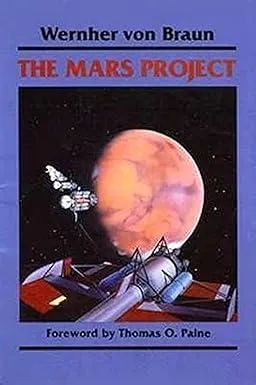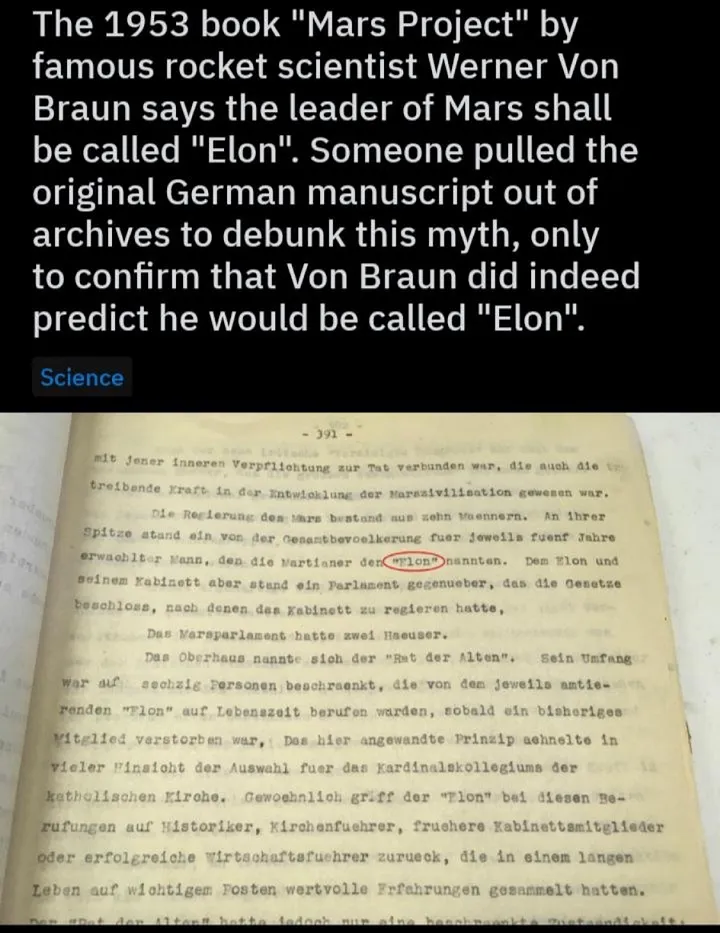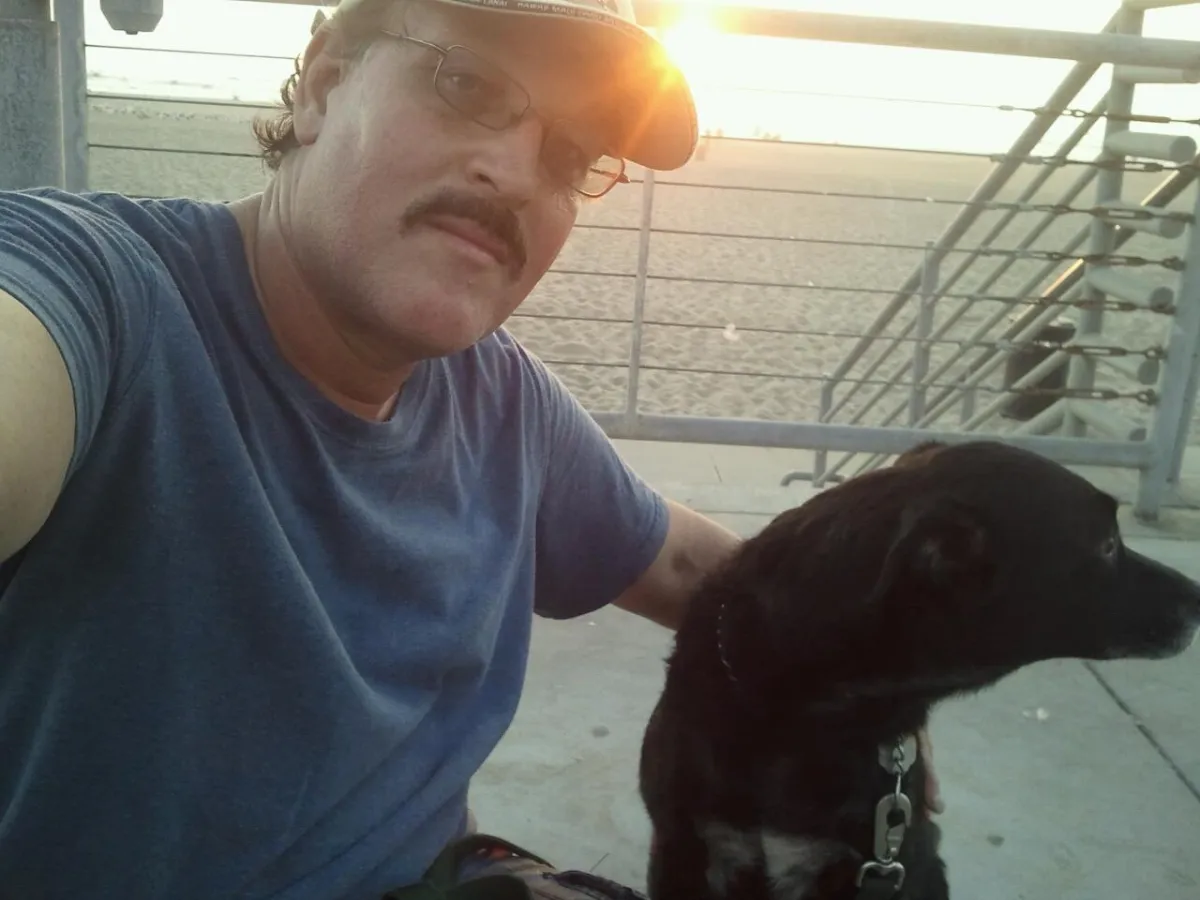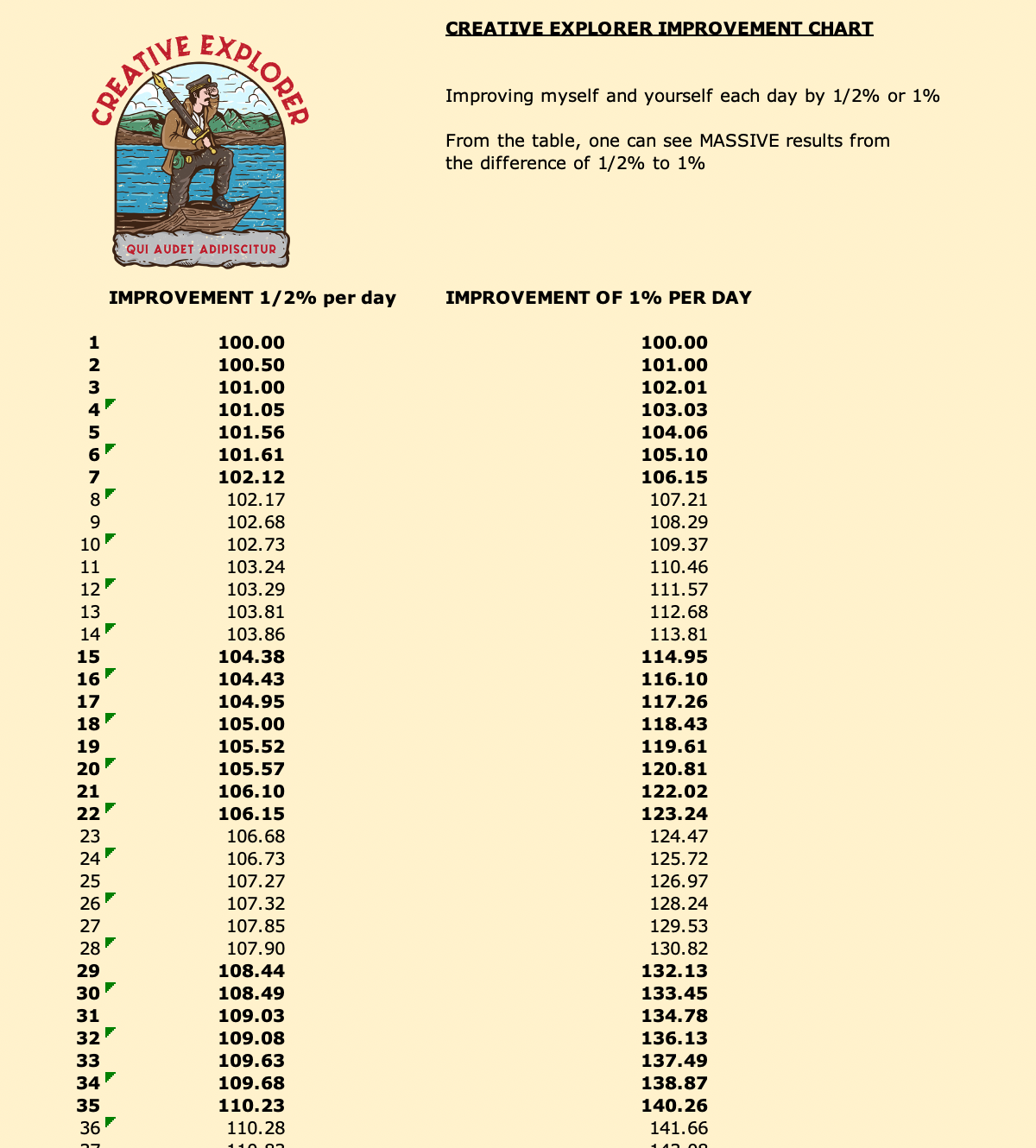
CreativeExplorer-MichaelMandaville.com
I work in Film. I live in Martial Arts. I thrive in Imagination.
Filmmaking & Writing
Scholar Warrior Way
Current Events

SCHOLAR: Creating Fiction from Fact-Elon & Von Braun and Werner von Braun
I saw a fascinating post about @elonmusk and the World War II/NASA scientist Werner von Braun. In his book, The Mars Project, von Braun writes about "The Elon" as a leader on Mars.
Von Braun was a German scientist who developed the German WW2 V-2 rocket program and later was a lead scientist on the US NASA programs like Apollo and early programs.
In the Mars Project book written by Wernher von Braun in 1953, von Braun saw a future colony society on Mars led by a leader called “Elon.”

Of course, since Elon Musk is focused on becoming an interplanetary species and heading to Mars. He has stated many times that his energy in SpaceX is to create a path for space travel into the ‘last frontier’ of space. On numerous occasions, he has talked about Mars:
Quotes about dying on Mars
"I would like to die on Mars. Just not on impact". Musk said this in 2013 at South by Southwest (SXSW).
"I think it would be great to be born on Earth and die on Mars. Just hopefully not at the point of impact".
Quotes about establishing a human colony on Mars
"Humans could be living in a city on Mars in the next 30 years".
"I think we should establish life on another planet--Mars in particular--but we're not making very good progress".
"The official vision statement of SpaceX reads as follows: 'to make life multi-planetary by establishing a self-sustaining city on Mars'".
Quotes about the form of government on Mars
"I think most likely the form of government of Mars would be a direct democracy, not representative".
One has to ask: Coincidence? Or did Von Braun see into the future? Questions create Fiction and Story. What are the threads between Von Braun and Elon? At one point, some online conjecture is that Musk’s father, Errol, said that he read the Mars Projects, liked the name “Elon” in the book and named his son.

Let’s go further in examining the name “Elon”. Why did Von Braun pick this name?
Elon is a gender-neutral name of Hebrew origin, meaning "oak tree." This biblical name first appeared in the Old Testament as the masculine Elon, a prominent judge in Israel and member of the Zebulun tribe. Oak trees are also associated with several positive traits, including strength, wisdom, and endurance.Right now, of course, we see that Elon is a Hebrew name.
Von Braun was working for Nazi Germany building weaponized rockets which launched against the Allies, particularly Britain. He was officially a member of the notorious Allgemeine SS. Scooped up by the Americans forces in Operation Paperclip (grabbing as many German scientists as possible post war), he lead rocket research in the United States for military and NASA space travel. He even helped Walt Disney to consult on space travel movies.
Von Braun’s name is also fascinating. Wernher Magnus Maximilian Freiherr von Braun. The ‘von’ denotes a heritage of nobility along with ‘Freiherr’ which meant ‘free lord’ and is often translated to Baron.
What could be the connection between rocket science, von Braun’s work in rockets and the Hebrew name of Elon? Von Braun was a controversial man for NASA but his involvement with the Nazi forced labor war machine is overlooked because the Western Allies were now fighting the Cold War with the Soviet Union, Communist China and more.
In reading science fiction books, one is inspired to ‘reach for the stars’ and the utterly fantastic. We ask a lot of ‘what if’ questions. What if Von Braun stumbled through tests into a world where he could see the future. Perhaps he had seen post-war of the devastation that his work and SS affiliation had caused and had a significant transformation for the Jewish people.
The strategy in reading fact and writing fiction is to ask questions. A lot of questions. To make connections, connect more dots and come up with logical and hopefully surprising answers to create a unique and enjoyable plot for the reader.
And maybe get them to Mars.
ADDITIONAL NOTES:
The Mars Project (German: Das Marsprojekt) is a 1952 non-fiction scientific book by the German (later German-American) rocket physicist, astronautics engineer and space architect Wernher von Braun. It was translated from the original German by Henry J. White and first published in English by the University of Illinois Press in 1953.
The Mars Project is a technical specification for a human expedition to Mars. It was written by von Braun in 1948 and was the first "technically comprehensive design" for such an expedition.[1] The book has been described as "the most influential book on planning human missions to Mars".[2]
From Wikipedia:The Mars Project
The Mars Project is a technical specification for a human mission to Mars that von Braun wrote in 1948, with a provisional launch date of 1965.[1] He envisioned an "enormous scientific expedition" involving a fleet of ten spacecraft with 70 crew members that would spend 443 days on the surface of Mars before returning to Earth.[1] The spacecraft, seven passenger ships, and three cargo ships, would all be assembled in Earth orbit using materials supplied by 950 launches of three-stage reusable heavy-lift launch vehicles. The fleet would use a nitric acid/hydrazine propellant that, although corrosive and toxic, could be stored without refrigeration during the three-year round-trip to Mars. Von Braun calculated the size and weight of each ship, and how much fuel each of them would require for the round trip (5,320,000 metric tons). Hohmann trajectories would be used to move from Earth- to Mars-orbit, and von Braun computed each rocket burn necessary to perform the required manoeuvres.[4]
Once in Mars orbit, the crew would use telescopes to find a suitable site for their base camp near the equator. A crewed winged craft would detach itself from one of the orbiting ships and glide down to one of Mars' poles and use skis to land on the ice. The crew would then travel 6,500 km overland using crawlers to the identified base camp site and build a landing strip. The rest of the ground crew would descend from orbit to the landing strip in wheeled gliders. A skeleton crew would remain behind in the orbiting ships. The gliders would also serve as ascent craft to return the crew to the mother ships at the end of the ground mission.[1][4]
From Wikipedia: Werner Von Braun
Wernher Magnus Maximilian Freiherr von Braun (US: /ˈvɜːrnər vɒn ˈbraʊn/ VUR-nər von BROWN,[3] German: [ˈvɛʁnheːɐ̯ fɔn ˈbʁaʊn]; 23 March 1912 – 16 June 1977) was a German-American aerospace engineer[4] and space architect. He was a member of the Nazi Party and Allgemeine SS, the leading figure in the development of rocket technology in Nazi Germany, and later a pioneer of rocket and space technology in the United States.[5]
As a young man, von Braun worked in Nazi Germany's rocket development program. He helped design and co-developed the V-2 rocket at Peenemünde during World War II. The V-2 became the first artificial object to travel into space on 20 June 1944. Following the war, he was secretly moved to the United States, along with about 1,600 other German scientists, engineers, and technicians, as part of Operation Paperclip.[6] He worked for the United States Army on an intermediate-range ballistic missile program, and he developed the rockets that launched the United States' first space satellite Explorer 1 in 1958. He worked with Walt Disney on a series of films, which popularized the idea of human space travel in the U.S. and beyond from 1955 to 1957.[7]
In 1960, his group was assimilated into NASA, where he served as director of the newly formed Marshall Space Flight Center and as the chief architect of the Saturn V super heavy-lift launch vehicle that propelled the Apollo spacecraft to the Moon.[8][9] In 1967, von Braun was inducted into the National Academy of Engineering, and in 1975, he received the National Medal of Science.

SCHOLAR: Creating Fiction from Fact-Elon & Von Braun and Werner von Braun
I saw a fascinating post about @elonmusk and the World War II/NASA scientist Werner von Braun. In his book, The Mars Project, von Braun writes about "The Elon" as a leader on Mars.
Von Braun was a German scientist who developed the German WW2 V-2 rocket program and later was a lead scientist on the US NASA programs like Apollo and early programs.
In the Mars Project book written by Wernher von Braun in 1953, von Braun saw a future colony society on Mars led by a leader called “Elon.”

Of course, since Elon Musk is focused on becoming an interplanetary species and heading to Mars. He has stated many times that his energy in SpaceX is to create a path for space travel into the ‘last frontier’ of space. On numerous occasions, he has talked about Mars:
Quotes about dying on Mars
"I would like to die on Mars. Just not on impact". Musk said this in 2013 at South by Southwest (SXSW).
"I think it would be great to be born on Earth and die on Mars. Just hopefully not at the point of impact".
Quotes about establishing a human colony on Mars
"Humans could be living in a city on Mars in the next 30 years".
"I think we should establish life on another planet--Mars in particular--but we're not making very good progress".
"The official vision statement of SpaceX reads as follows: 'to make life multi-planetary by establishing a self-sustaining city on Mars'".
Quotes about the form of government on Mars
"I think most likely the form of government of Mars would be a direct democracy, not representative".
One has to ask: Coincidence? Or did Von Braun see into the future? Questions create Fiction and Story. What are the threads between Von Braun and Elon? At one point, some online conjecture is that Musk’s father, Errol, said that he read the Mars Projects, liked the name “Elon” in the book and named his son.

Let’s go further in examining the name “Elon”. Why did Von Braun pick this name?
Elon is a gender-neutral name of Hebrew origin, meaning "oak tree." This biblical name first appeared in the Old Testament as the masculine Elon, a prominent judge in Israel and member of the Zebulun tribe. Oak trees are also associated with several positive traits, including strength, wisdom, and endurance.Right now, of course, we see that Elon is a Hebrew name.
Von Braun was working for Nazi Germany building weaponized rockets which launched against the Allies, particularly Britain. He was officially a member of the notorious Allgemeine SS. Scooped up by the Americans forces in Operation Paperclip (grabbing as many German scientists as possible post war), he lead rocket research in the United States for military and NASA space travel. He even helped Walt Disney to consult on space travel movies.
Von Braun’s name is also fascinating. Wernher Magnus Maximilian Freiherr von Braun. The ‘von’ denotes a heritage of nobility along with ‘Freiherr’ which meant ‘free lord’ and is often translated to Baron.
What could be the connection between rocket science, von Braun’s work in rockets and the Hebrew name of Elon? Von Braun was a controversial man for NASA but his involvement with the Nazi forced labor war machine is overlooked because the Western Allies were now fighting the Cold War with the Soviet Union, Communist China and more.
In reading science fiction books, one is inspired to ‘reach for the stars’ and the utterly fantastic. We ask a lot of ‘what if’ questions. What if Von Braun stumbled through tests into a world where he could see the future. Perhaps he had seen post-war of the devastation that his work and SS affiliation had caused and had a significant transformation for the Jewish people.
The strategy in reading fact and writing fiction is to ask questions. A lot of questions. To make connections, connect more dots and come up with logical and hopefully surprising answers to create a unique and enjoyable plot for the reader.
And maybe get them to Mars.
ADDITIONAL NOTES:
The Mars Project (German: Das Marsprojekt) is a 1952 non-fiction scientific book by the German (later German-American) rocket physicist, astronautics engineer and space architect Wernher von Braun. It was translated from the original German by Henry J. White and first published in English by the University of Illinois Press in 1953.
The Mars Project is a technical specification for a human expedition to Mars. It was written by von Braun in 1948 and was the first "technically comprehensive design" for such an expedition.[1] The book has been described as "the most influential book on planning human missions to Mars".[2]
From Wikipedia:The Mars Project
The Mars Project is a technical specification for a human mission to Mars that von Braun wrote in 1948, with a provisional launch date of 1965.[1] He envisioned an "enormous scientific expedition" involving a fleet of ten spacecraft with 70 crew members that would spend 443 days on the surface of Mars before returning to Earth.[1] The spacecraft, seven passenger ships, and three cargo ships, would all be assembled in Earth orbit using materials supplied by 950 launches of three-stage reusable heavy-lift launch vehicles. The fleet would use a nitric acid/hydrazine propellant that, although corrosive and toxic, could be stored without refrigeration during the three-year round-trip to Mars. Von Braun calculated the size and weight of each ship, and how much fuel each of them would require for the round trip (5,320,000 metric tons). Hohmann trajectories would be used to move from Earth- to Mars-orbit, and von Braun computed each rocket burn necessary to perform the required manoeuvres.[4]
Once in Mars orbit, the crew would use telescopes to find a suitable site for their base camp near the equator. A crewed winged craft would detach itself from one of the orbiting ships and glide down to one of Mars' poles and use skis to land on the ice. The crew would then travel 6,500 km overland using crawlers to the identified base camp site and build a landing strip. The rest of the ground crew would descend from orbit to the landing strip in wheeled gliders. A skeleton crew would remain behind in the orbiting ships. The gliders would also serve as ascent craft to return the crew to the mother ships at the end of the ground mission.[1][4]
From Wikipedia: Werner Von Braun
Wernher Magnus Maximilian Freiherr von Braun (US: /ˈvɜːrnər vɒn ˈbraʊn/ VUR-nər von BROWN,[3] German: [ˈvɛʁnheːɐ̯ fɔn ˈbʁaʊn]; 23 March 1912 – 16 June 1977) was a German-American aerospace engineer[4] and space architect. He was a member of the Nazi Party and Allgemeine SS, the leading figure in the development of rocket technology in Nazi Germany, and later a pioneer of rocket and space technology in the United States.[5]
As a young man, von Braun worked in Nazi Germany's rocket development program. He helped design and co-developed the V-2 rocket at Peenemünde during World War II. The V-2 became the first artificial object to travel into space on 20 June 1944. Following the war, he was secretly moved to the United States, along with about 1,600 other German scientists, engineers, and technicians, as part of Operation Paperclip.[6] He worked for the United States Army on an intermediate-range ballistic missile program, and he developed the rockets that launched the United States' first space satellite Explorer 1 in 1958. He worked with Walt Disney on a series of films, which popularized the idea of human space travel in the U.S. and beyond from 1955 to 1957.[7]
In 1960, his group was assimilated into NASA, where he served as director of the newly formed Marshall Space Flight Center and as the chief architect of the Saturn V super heavy-lift launch vehicle that propelled the Apollo spacecraft to the Moon.[8][9] In 1967, von Braun was inducted into the National Academy of Engineering, and in 1975, he received the National Medal of Science.

SCHOLAR: Creating Fiction from Fact-Elon & Von Braun and Werner von Braun
I saw a fascinating post about @elonmusk and the World War II/NASA scientist Werner von Braun. In his book, The Mars Project, von Braun writes about "The Elon" as a leader on Mars.
Von Braun was a German scientist who developed the German WW2 V-2 rocket program and later was a lead scientist on the US NASA programs like Apollo and early programs.
In the Mars Project book written by Wernher von Braun in 1953, von Braun saw a future colony society on Mars led by a leader called “Elon.”

Of course, since Elon Musk is focused on becoming an interplanetary species and heading to Mars. He has stated many times that his energy in SpaceX is to create a path for space travel into the ‘last frontier’ of space. On numerous occasions, he has talked about Mars:
Quotes about dying on Mars
"I would like to die on Mars. Just not on impact". Musk said this in 2013 at South by Southwest (SXSW).
"I think it would be great to be born on Earth and die on Mars. Just hopefully not at the point of impact".
Quotes about establishing a human colony on Mars
"Humans could be living in a city on Mars in the next 30 years".
"I think we should establish life on another planet--Mars in particular--but we're not making very good progress".
"The official vision statement of SpaceX reads as follows: 'to make life multi-planetary by establishing a self-sustaining city on Mars'".
Quotes about the form of government on Mars
"I think most likely the form of government of Mars would be a direct democracy, not representative".
One has to ask: Coincidence? Or did Von Braun see into the future? Questions create Fiction and Story. What are the threads between Von Braun and Elon? At one point, some online conjecture is that Musk’s father, Errol, said that he read the Mars Projects, liked the name “Elon” in the book and named his son.

Let’s go further in examining the name “Elon”. Why did Von Braun pick this name?
Elon is a gender-neutral name of Hebrew origin, meaning "oak tree." This biblical name first appeared in the Old Testament as the masculine Elon, a prominent judge in Israel and member of the Zebulun tribe. Oak trees are also associated with several positive traits, including strength, wisdom, and endurance.Right now, of course, we see that Elon is a Hebrew name.
Von Braun was working for Nazi Germany building weaponized rockets which launched against the Allies, particularly Britain. He was officially a member of the notorious Allgemeine SS. Scooped up by the Americans forces in Operation Paperclip (grabbing as many German scientists as possible post war), he lead rocket research in the United States for military and NASA space travel. He even helped Walt Disney to consult on space travel movies.
Von Braun’s name is also fascinating. Wernher Magnus Maximilian Freiherr von Braun. The ‘von’ denotes a heritage of nobility along with ‘Freiherr’ which meant ‘free lord’ and is often translated to Baron.
What could be the connection between rocket science, von Braun’s work in rockets and the Hebrew name of Elon? Von Braun was a controversial man for NASA but his involvement with the Nazi forced labor war machine is overlooked because the Western Allies were now fighting the Cold War with the Soviet Union, Communist China and more.
In reading science fiction books, one is inspired to ‘reach for the stars’ and the utterly fantastic. We ask a lot of ‘what if’ questions. What if Von Braun stumbled through tests into a world where he could see the future. Perhaps he had seen post-war of the devastation that his work and SS affiliation had caused and had a significant transformation for the Jewish people.
The strategy in reading fact and writing fiction is to ask questions. A lot of questions. To make connections, connect more dots and come up with logical and hopefully surprising answers to create a unique and enjoyable plot for the reader.
And maybe get them to Mars.
ADDITIONAL NOTES:
The Mars Project (German: Das Marsprojekt) is a 1952 non-fiction scientific book by the German (later German-American) rocket physicist, astronautics engineer and space architect Wernher von Braun. It was translated from the original German by Henry J. White and first published in English by the University of Illinois Press in 1953.
The Mars Project is a technical specification for a human expedition to Mars. It was written by von Braun in 1948 and was the first "technically comprehensive design" for such an expedition.[1] The book has been described as "the most influential book on planning human missions to Mars".[2]
From Wikipedia:The Mars Project
The Mars Project is a technical specification for a human mission to Mars that von Braun wrote in 1948, with a provisional launch date of 1965.[1] He envisioned an "enormous scientific expedition" involving a fleet of ten spacecraft with 70 crew members that would spend 443 days on the surface of Mars before returning to Earth.[1] The spacecraft, seven passenger ships, and three cargo ships, would all be assembled in Earth orbit using materials supplied by 950 launches of three-stage reusable heavy-lift launch vehicles. The fleet would use a nitric acid/hydrazine propellant that, although corrosive and toxic, could be stored without refrigeration during the three-year round-trip to Mars. Von Braun calculated the size and weight of each ship, and how much fuel each of them would require for the round trip (5,320,000 metric tons). Hohmann trajectories would be used to move from Earth- to Mars-orbit, and von Braun computed each rocket burn necessary to perform the required manoeuvres.[4]
Once in Mars orbit, the crew would use telescopes to find a suitable site for their base camp near the equator. A crewed winged craft would detach itself from one of the orbiting ships and glide down to one of Mars' poles and use skis to land on the ice. The crew would then travel 6,500 km overland using crawlers to the identified base camp site and build a landing strip. The rest of the ground crew would descend from orbit to the landing strip in wheeled gliders. A skeleton crew would remain behind in the orbiting ships. The gliders would also serve as ascent craft to return the crew to the mother ships at the end of the ground mission.[1][4]
From Wikipedia: Werner Von Braun
Wernher Magnus Maximilian Freiherr von Braun (US: /ˈvɜːrnər vɒn ˈbraʊn/ VUR-nər von BROWN,[3] German: [ˈvɛʁnheːɐ̯ fɔn ˈbʁaʊn]; 23 March 1912 – 16 June 1977) was a German-American aerospace engineer[4] and space architect. He was a member of the Nazi Party and Allgemeine SS, the leading figure in the development of rocket technology in Nazi Germany, and later a pioneer of rocket and space technology in the United States.[5]
As a young man, von Braun worked in Nazi Germany's rocket development program. He helped design and co-developed the V-2 rocket at Peenemünde during World War II. The V-2 became the first artificial object to travel into space on 20 June 1944. Following the war, he was secretly moved to the United States, along with about 1,600 other German scientists, engineers, and technicians, as part of Operation Paperclip.[6] He worked for the United States Army on an intermediate-range ballistic missile program, and he developed the rockets that launched the United States' first space satellite Explorer 1 in 1958. He worked with Walt Disney on a series of films, which popularized the idea of human space travel in the U.S. and beyond from 1955 to 1957.[7]
In 1960, his group was assimilated into NASA, where he served as director of the newly formed Marshall Space Flight Center and as the chief architect of the Saturn V super heavy-lift launch vehicle that propelled the Apollo spacecraft to the Moon.[8][9] In 1967, von Braun was inducted into the National Academy of Engineering, and in 1975, he received the National Medal of Science.

Did You Know...
... if you improve 1/2% each day, then you will be 267% better over one year? Who can compete with that?

Setting Yourself Up for Success usually doesn't mean one big jump but rather incremental change day after day. Think of it like a ocean wave, moving far out in the Pacific with almost an undetectable push...finally with the power and grace of an ocean wave onto the beach. Create your own metaphor to embrace small habits with a huge future impact.




Facebook
Instagram
X
LinkedIn
Youtube
Website